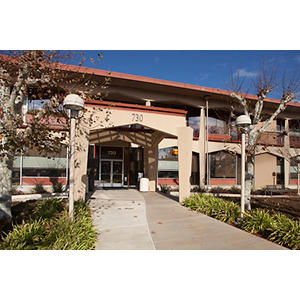Charles Chan, MD
Clinical Assistant Professor
Pediatric Orthopedic Surgery
“I am particularly proud when I’m able to help realize each child’s athletic ambitions.”
Mi acercamiento
Having a sports injury can be both frightening and disappointing for a young athlete. I strive to provide a warm and reassuring experience while helping children recover from their injury. My goal is to help each child return to their sport using both surgical and non-surgical treatments while also emphasizing injury prevention. I tailor each treatment plan according to the child’s stage of development and I’m particularly proud when I able to help realize each child’s athletic ambitions.
During my residency, I developed a passion for sports medicine involving the growing athlete. Pursuing this interest, I completed two additional years of fellowship training. My special areas of interest include anterior cruciate ligament (ACL) reconstruction; shoulder instability; and arthroscopic and open treatment of the growing knee, shoulder, elbow, and ankle.
I feel extremely fortunate to have the opportunity to work with young athletes. While sports injuries in the growing child present their own set of unique challenges, nothing is more rewarding than seeing the smiles on my patients’ faces when they return to their sport.
Localización

5000 Pleasanton Avenue, 2nd Floor, Suite 200
Pleasanton, CA 94566
Mapas, direcciones y estacionamiento
Teléfono : (844) 416-7846
Fax : (925) 263-0275

1720 El Camino Real, Suite 122
Burlingame, CA 94010
Mapas, direcciones y estacionamiento
Teléfono : (844) 416-7846
Fax : (650) 498-6687

730 Welch Road, 1st Floor
Palo Alto, CA 94304
Mapas, direcciones y estacionamiento
Teléfono : (844) 416-7846
Fax : (650) 497-8891
Experiencia
ACL Reconstruction in the Growing Athlete
ACL Reconstruction with Open Growth Plates
Ankle Instability
Arthroscopic Surgery
Elbow Injuries
Low Bone Density
Meniscus Tears
Orthopedics
Osteochondritis Dissecans Lesions
Patellar Dislocation
Pediatric Orthopedic Trauma
Pediatric and Adolescent Sports Injuries
Shoulder Instability
Trabajo y educación
Warren Alpert Medical School Brown University, Providence, RI, 05/31/2006
Stony Brook Orthopaedic Surgery Residency, Stony Brook, NY, 6/30/2011
University of Rochester Sports Medicine Fellowship, Rochester, NY, 07/31/2012
Columbia University Dept of Orthopaedic Surgery, New York, NY, 7/31/2013
Orthopaedic Surgery, American Board of Orthopaedic Surgery, 2015
Idiomas
English
Mandarin
Taiwanese


Conéctese con nosotros:
Descarga nuestra App: